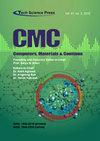Adversarial Neural Network Classifiers for COVID-19 Diagnosis in Ultrasound Images
IF 1.7
4区 计算机科学
Q3 COMPUTER SCIENCE, INFORMATION SYSTEMS
引用次数: 5
Abstract
The novel Coronavirus disease 2019 (COVID-19) pandemic has begun in China and is still affecting thousands of patient lives worldwide daily. Although Chest X-ray and Computed Tomography are the gold standard medical imaging modalities for diagnosing potentially infected COVID-19 cases, applying Ultrasound (US) imaging technique to accomplish this crucial diagnosing task has attracted many physicians recently. In this article, we propose two modified deep learning classifiers to identify COVID-19 and pneumonia diseases in US images, based on generative adversarial neural networks (GANs). The proposed image classifiers are a semi-supervised GAN and a modified GAN with auxiliary classifier. Each one includes a modified discriminator to identify the class of the US image using semi-supervised learning technique, keeping its main function of defining the “realness” of tested images. Extensive tests have been successfully conducted on public dataset of US images acquired with a convex US probe. This study demonstrated the feasibility of using chest US images with two GAN classifiers as a new radiological tool for clinical check of COVID-19 patients. The results of our proposed GAN models showed that high accuracy values above 91.0% were obtained under different sizes of limited training data, outperforming other deep learning-based methods, such as transfer learning models in the recent studies. Consequently, the clinical implementation of our computer-aided diagnosis of US-COVID-19 is the future work of this study. © 2021 Tech Science Press. All rights reserved.对抗神经网络分类器在超声图像中诊断COVID-19
新型冠状病毒病2019 (COVID-19)大流行已经在中国开始,每天仍影响着全球数千名患者的生活。尽管胸部x线和计算机断层扫描是诊断潜在感染COVID-19病例的金标准医学成像方式,但应用超声成像技术来完成这一关键的诊断任务最近吸引了许多医生。在本文中,我们提出了两个改进的深度学习分类器来识别美国图像中的COVID-19和肺炎疾病,基于生成对抗神经网络(gan)。提出的图像分类器是半监督GAN和带辅助分类器的改进GAN。每个模型都包含一个改进的判别器,使用半监督学习技术来识别美国图像的类别,保持其定义被测图像的“真实性”的主要功能。广泛的测试已经成功地进行了公共数据集的美国图像与凸美国探针获得。本研究证明了使用两种GAN分类器的胸部超声图像作为临床检查COVID-19患者的新放射学工具的可行性。我们提出的GAN模型的结果表明,在不同规模的有限训练数据下,获得了超过91.0%的高准确率值,优于其他基于深度学习的方法,如最近研究中的迁移学习模型。因此,我们的US-COVID-19计算机辅助诊断的临床实施是本研究的未来工作。©2021科技科学出版社。版权所有。
本文章由计算机程序翻译,如有差异,请以英文原文为准。
求助全文
约1分钟内获得全文
求助全文
来源期刊

Cmc-computers Materials & Continua
工程技术-材料科学:综合
CiteScore
5.30
自引率
19.40%
发文量
345
审稿时长
1 months
期刊介绍:
This journal publishes original research papers in the areas of computer networks, artificial intelligence, big data management, software engineering, multimedia, cyber security, internet of things, materials genome, integrated materials science, data analysis, modeling, and engineering of designing and manufacturing of modern functional and multifunctional materials.
Novel high performance computing methods, big data analysis, and artificial intelligence that advance material technologies are especially welcome.
 求助内容:
求助内容: 应助结果提醒方式:
应助结果提醒方式:


